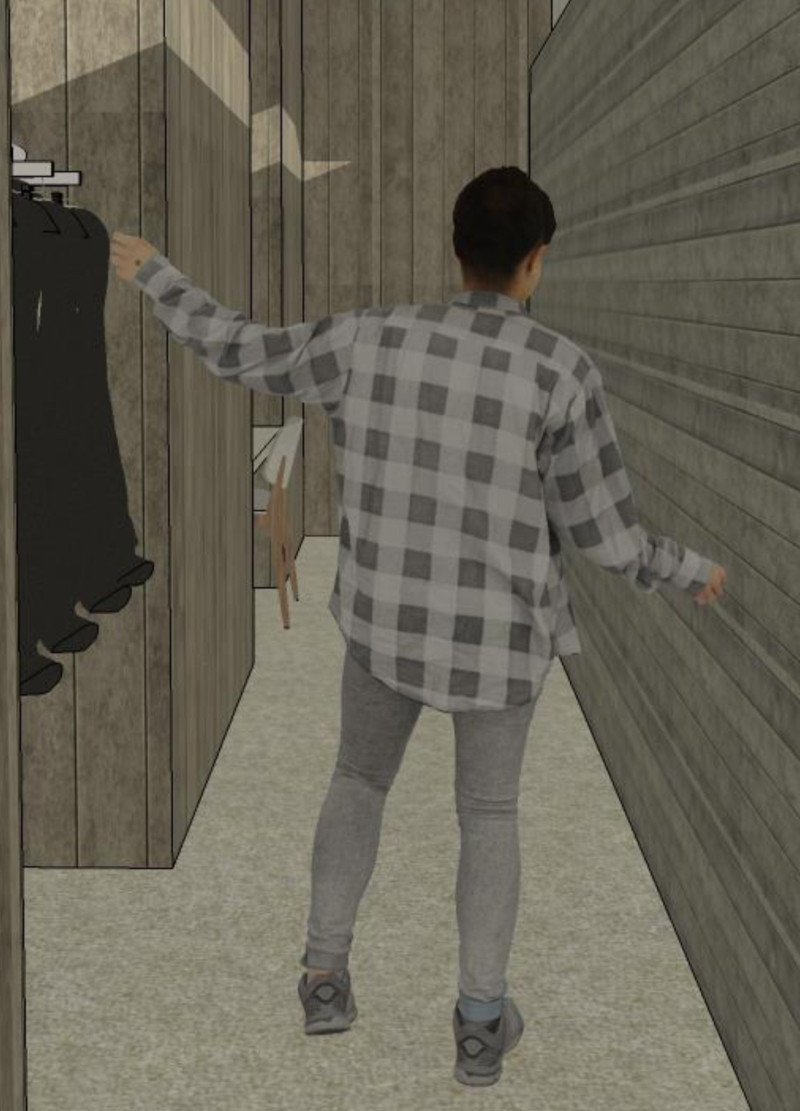5 key facts about this project
The design centers on creating a home specifically for blind individuals, highlighting their abilities rather than disabilities. Located in a mindful environment, the residence aims to provide accessibility and encourage independence. The concept emphasizes how thoughtful design can make daily navigation easier, helping occupants connect with their surroundings without relying on sight.
Walls as Directional Tools
Walls play a crucial role in guiding movement throughout the home. They are not just barriers; they act as helpful assistants for navigation. By using walls as tactile guides, blind individuals can move through the space with confidence. A corridor that is 1.1 meters wide supports this idea, allowing occupants to walk and maintain contact with the walls, ensuring safety and ease of movement.
Differentiation in Wall Patterns
The design includes different patterns and textures on internal and external walls to aid in spatial orientation. By varying these surfaces, the layout provides essential sensory feedback. This enables blind individuals to navigate their environment more easily through touch. The design improves the overall experience by helping occupants understand the space around them better.
Functionality of Internal Walls
Internal walls serve multiple purposes beyond separating areas within the home. They also support furniture and the roof, contributing to the structure's stability. This thoughtful combination ensures that every element is functional, maximizing the use of space. The separation of the roof from the external walls allows natural light to enter, enhancing the home’s quality while avoiding overwhelming visual effects.
Natural Light Integration
Light enters the home indirectly, creating a soft and inviting atmosphere. This approach enriches the indoor environment without relying on direct visual cues. The design prioritizes a warm ambiance, promoting comfort. This detail aligns with the goal of providing a welcoming space for blind individuals, making the home feel both safe and inviting.


















































